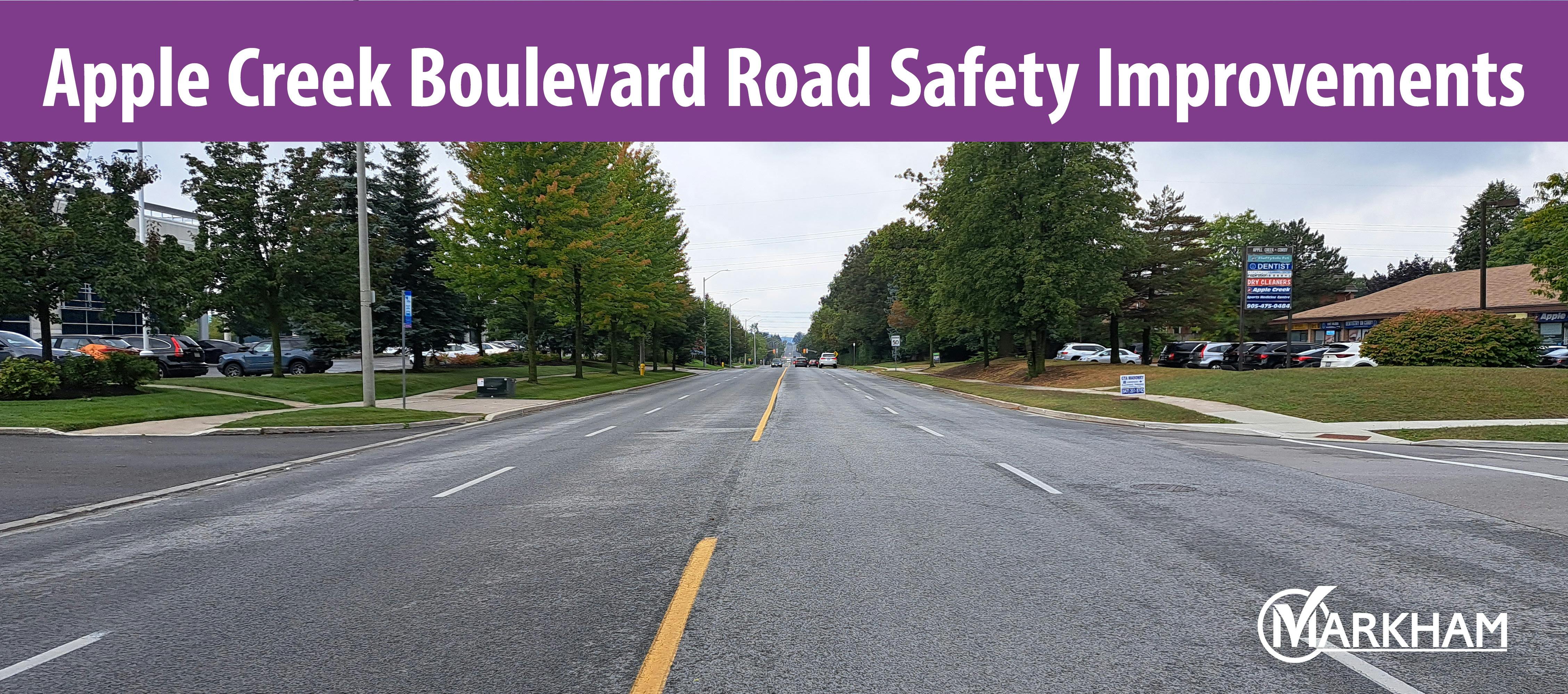FAQs
- 19 to 47 percent reduction in collisions due to reduced vehicle speeds and reduced conflicts between vehicles and other vehicles, pedestrians, and cyclists
- Reducing the number of vehicle travel lanes provides for improved pedestrian crossing opportunities.
- Removing multiple lanes reduces excessive speeds along the corridor.
- Allows left-turning vehicles to make their turn from a dedicated lane rather than from a through traffic lane, thus improving safety and operations for left turns.
- Allows for on-street bike lanes
- FHWA Road Diet Informational Guide, November 2014 https://safety.fhwa.dot.gov/road_diets/guidance/info_guide/
- Road Diets | A Livability Fact Sheet, 2014
1. Why are we here?
Following completion of a City-wide traffic safety audit, Apple Creek Boulevard was identified as having an elevated safety risk due to collision frequency, high operating speeds and conflicts. For this reason, the Apple Creek Boulevard corridor is a candidate for a road diet.
As it is a significant change from the existing roadway configuration the City is reaching out to the public to give them an opportunity to provide feedback on the proposed changes.
2. What is a road diet?
A road diet is a widely accepted treatment for calming traffic and repurposing a road. It typically involves reducing the number of lanes on a road by transitioning from four lanes (two in each direction) to two lanes (one in each direction), with a single two left turn lane. A road diet also typically enables the accommodation of active transportation in the form of bicycle lanes or protected bicycle lanes.

3. Why was this corridor selected for review?
As part of previous work undertaken by the City's consultant, portions of this corridor were identified as having a high potential for safety improvement due to the high number of collisions and speeding occurring along the corridor.
4. Will the road diet adversely affect traffic flow along the corridor?
Apple Creek has an average annual daily traffic (AADT) volume of 10,000 according to recent counts. According to the Federal Highway Administration, roads with less than 10,000 vehicles per day are a ‘Great candidate for Road Diets in most instances. Capacity will most likely not be affected.’ Road diets have been successfully implemented at daily traffic volumes up to 20,000.
Future traffic projections indicate that there will be increased delays during peak periods at two intersections (Rodick Road & Town Centre Boulevard/Hollingham Road) as a result of the proposed road diet. Delays can potentially be mitigated with adjustments to traffic signal timings.
5. How will the proposed road diet benefit cyclists?
The proposed design will provide dedicated on-road cycling facilities through the majority of the corridor with off-road facilities approaching Warden Avenue and Woodbine Avenue. For the sections with on-road cycling facilities, a painted buffer will be installed, where feasible, to increase cyclist comfort.
6. Will a design change that result from the study’s recommendations have an impact on my property?
All improvements will be implemented within the City's right-of-way (i.e. on City property) and there is no anticipation that private property will be directly impacted.
7. When will these improvements be implemented?
Detailed design of the corridor is anticipated to be completed in 2024. Construction will occur in 2025. Timelines are subject to budget approvals.
8. What are the benefits of a road diet?
For further reading, refer to the following:
https://www.aarp.org/livable-communities/info-2014/road-diets-fact-sheet.html

